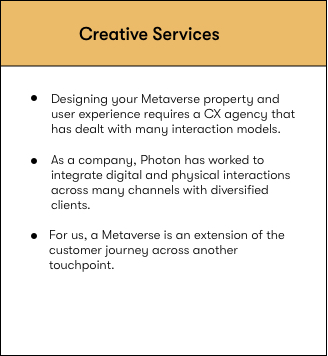For nearly a decade, CIOs and IT leaders have experimented with two-speed IT to drive business agility, only to discover that two-speed IT had more downsides than upsides. The process improvement they expected in delivery and collaboration was hard to come by.
Digital speed is re-engineering traditional IT
Adopt an agile approach to speed up digital innovation
The future of IT is one speed and based on agile principles. Connect with Photon to learn how you can inject speed in legacy enterprise systems.
Connect with Photon to stay relevant in this newest era of computing and brace for the next critical shifts in omnichannel trends.
Pull the plug on two-speed IT
By decoupling the management of customer-centric front-end systems from the transaction-oriented back-end systems, two-speed IT architecture allowed companies to embrace agile for their digital initiatives while retaining traditional IT for mission-critical back-end processes. The agile world of digital was expected to coexist with and make up for the glacial pace of traditional IT. While this approach made sense a decade ago, it is now viewed as a compromise that can cost companies dearly.
3 downsides of two-speed IT
- Disadvantage in the talent war: Recruiting and developing top talent is one of the biggest challenges most CIOs face today. With two-speed IT, top talent can get stuck in the slow group (traditional work) with no chance to switch sides they look for opportunities elsewhere. Eventually two-speed IT leads to talent drain—it makes it harder to acquire new talent or retain existing top talent.
- Hurry up and wait: Fast-moving projects are often delayed by slow traditional test-and-release cycles of the non-agile world
- Inefficient end stage testing Process: In the traditional waterfall approach, testing comes only at the end of the process; rectifying errors found at the end of the game are more time-consuming, arduous, and expensive
The rise of the digital enterprise
“Enterprise digital transformation must move at only one speed—the speed of the customer,” advises Srinivas Balasubramanian, CEO at Photon. To keep up with the fast-changing customer behaviors, the entire organization has to race together, and back-end systems cannot afford to be a silo or move at a glacial pace.
“We’re seeing tectonic shifts in terms of bringing the agile process methodologies, engineering culture, and product design thinking from Digital into traditional IT”, says Mukund Balasubramanian, CTO at Photon. “This is to a large extent also being driven by enabling technologies such as mobility, cloud computing, and scalable computing.”
It is time to rethink the IT organization in a mobile and cloud-first model and leverage known successes, such as agile methodologies, from the digital world. Adopting an agile approach significantly speeds up engineering and software innovation, allowing organizations to run at the speed of the customer. Cloud computing makes it easier for agile development teams to seamlessly combine multiple developments with other cloud services. As static resources can break the agility, many companies are migrating to cloud as a way to extend and deepen their agility.
How cloud computing enhances agile development
-
It enables work without any interruption by offering an unlimited number of testing and staging servers to the development teams
-
It encourages developers for experimentation and fast innovation by enabling faster builds and testing
-
It creates multiple environments for testing different features so multiple people can simultaneously work on different parts of the code
-
It enables secure, readily available reliable source code that companies can scale up to thousands of developers without infrastructure needs
-
It can automate feedback at all stages of a project—instant feedback is very valuable to agile software methodology
One speed: All agile
Unlike two-speed IT, the all-agile model is a long-term solution which improves efficiency and outcomes across technology delivery. The result is better experiences for customers and a competitive edge for the business. The future of IT is one speed and based on agile principles. Here’s how you can inject digital speed on “legacy” enterprise systems:
- Identify and empower agile champions
- Develop the right technical environment to accelerate your digital transformation program
- Implement agile not as a rigid doctrine, but rather as a flexible set of principles to get implemented in the right way to improve productivity
- Create cross-functional teams—this is one of the hallmarks of agile in which members representing technology and the business work together
Connect with Photon to stay relevant in this newest era of computing and brace for the next critical shifts in omnichannel trends.
A deeper look into digital

The evolution of digital: Top 5 predictions from PhotonWorld 2016
Get the complete CTO presentation deck

Six reasons why digital transformation is inevitable in 2018
Learn why digital transformation is inevitable in 2018


Download our whitepaper to integrate digital at the core of business










